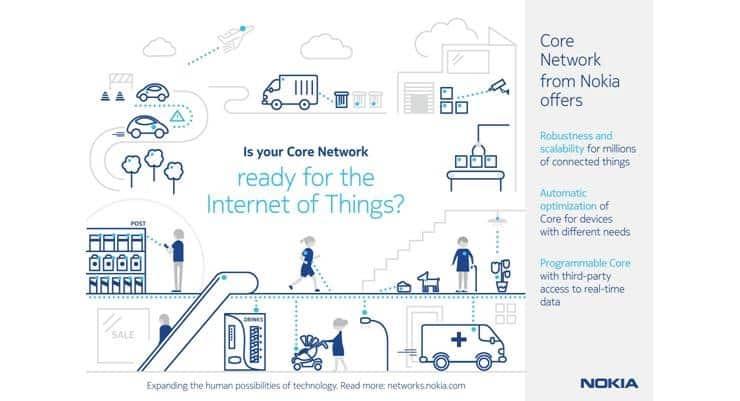At the Shanghai MWC, Nokia Networks unveiled an IoT connectivity solution for LTE core and radio networks which the company says will enable existing LTE networks to be IoT ready. Nokia Networks' new IoT connectivity solution, Nokia’s Core for IoT and its enhanced Smart Scheduler for LTE radio enables Operators to prepare their current networks to cater for the IOT and machine-to-machine (M2M) traffic.
According to Nokia Networks, the new IoT solution consists of a 3-step approach for operators to smoothly migrate their LTE core network to an IoT overlay, starting with subscriber data management to gateways and mobility management. Nokia Networks said that the stepwise approach allows Operators to flexibly migrate their core domains such that they can tackle the mix of mobile broadband and M2M traffic in a cost efficient way while keeping operational impact at a minimal level. Nokia Networks said that given the impact of IoT applications on the network in terms of the number and type of connected devices as well as traffic patterns, the solution enables Operators to gear up to respond to the shift in services and traffic delivered on their networks.
Dustin Kehoe, Head of Telecom Research and Practice Lead, IDC
LTE will be the technology of choice for M2M and IoT applications, as it provides the robust connectivity and flexibility to support the mix of high and low data rates needed for M2M and IoT traffic. And it does all that very cost-effectively. However, for LTE to thrive in the IoT world, operators will need to address economies of scale as well as IoT-specific security demands.
Michael Clever, Head of Mobile Broadband Core Cluster at Nokia Networks
While IoT represents a major growth opportunity for operators, they need to prepare their networks well. Nokia’s IoT connectivity solution is a key building block required to efficiently manage the related M2M traffic. A secure connectivity layer will then open up further opportunities for management and application platforms, as well as analytics and user services.




















